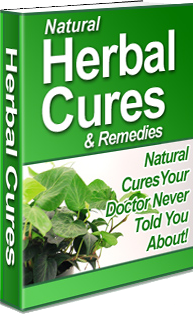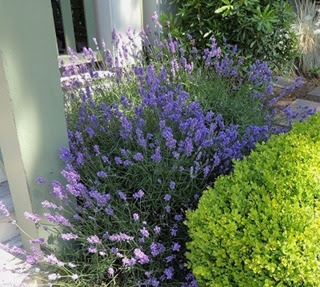The Miracle of Lavender Oil: 25 Amazing Uses for Survival
By Gaye Levy
When it comes to essential oils, you will find that everyone has their favorites. There are so many to choose from that deciding which ones to use on a regular basis can be rather daunting. The ultimate selection is further complicated by the fact that many different essential oils have the very same qualities when it comes to healing and other uses.
For me, the deciding factor has been multifold. Therapeutic benefit, healing ability, fragrance and cost have played a role in determining what to include in my own collection of essential oils. You already know about two of my favorites, tea tree oil (melaleuca) and clove oil. Today I would like to introduce you to a third favorite, namely lavender oil.
Widget not in any sidebars
Lavender was the very first essential oil I purchased when I first became familiar with essential oils in the late 1980s. As someone who is always getting cuts and scrapes as well as burns from careless cooking techniques, lavender used topically has always been my first aid treatment of choice. As a natural antibiotic, and antiseptic, it has promoted healing and I truly believe that it has prevented scaring. It also seemed to calm the frequent migraine headaches that thankfully, I have now outgrown.
WHAT IS LAVENDER?
So what is lavender? First and foremost, it is a lovely green plant with fragrant purple flowers. It is native to the mountainous zones of the Mediterranean where it grows in sunny, stony habitats. Today, it flourishes throughout southern Europe, Australia, and the United States. The oil in lavender’s small, blue violet flowers gives the herb its fragrant scent. The flowers are arranged in spirals of 6 – 10 blossoms, forming interrupted spikes above the foliage.
It’s name comes from the Latin lavare, which means “to wash. It is believed that lit was first used as a bath additive to help purify the body and spirit in ancient Persia, Greece, and Rome.
Historically, lavender has been used as an antiseptic and as a remedy for anxiety, restlessness, insomnia, depression, headache, upset stomach, and hair loss. It is a key component in aromatherapy, where the scent is used for both healing and relaxation purposes.
HOW IS IT USED?
From a prepper’s point of view, lavender has three primary uses, as an antiseptic, a topical anesthetic, and as a sedative.
Antiseptic. Used alone or in combination with carrier oils, lotions or creams, lavender is used on the skin to treat abrasions, cuts, burns, and inflammatory skin conditions. Lavender helps promote healing and is one of the few essential oils that can can be safely applied to the skin in it undiluted form.
Topical anesthetic. As a topical anesthetic and pain reliever, lavender oil can dramatically reduce the sensation of pain from burns and insect bites.
Sedative. Lavender promotes a sense of calm and relaxation and can assist in combating sleeplessness and insomnia.
Beyond these broad uses, there are also many practical applications of lavender essential oil. Each of the 25 uses below will foster self-sufficiency not only now, but in a survival situation. They are presented in no particular order.
 25 USES OF LAVENDER OIL FOR SURVIVAL
25 USES OF LAVENDER OIL FOR SURVIVAL
1. First Aid. Use on burns and scalds to avoid the formation of blisters and decrease the pain. Also use on minor scrapes to prevent scarring.
2. Stress and anxiety. Soothe anxiety and stress with the calming effects of lavender oil.
3. Sleep aid. Get some sleep by rubbing some lavender on the bottoms of your feet before going to bed.
4. Menstrual cramps. Relieve menstrual cramps by rubbing lavender oil over the cramping area of your abdomen
5. Headaches. Rub oil on the temples and forehead. Also try a combination of peppermint and lavender oil for even greater relief.
6. Bleeding. A few drops of lavender will help stop bleeding on small cuts and wounds.
7. Chest congestion. Relieve chest congestion the next time you have a cold or the flu by adding4-6 drops of lavender oil to a bowl of hot water. Place a towel over your head, and inhale the vapor slowly and deeply. Just be careful that the water is not too hot or you will burn yourself.
8. Muscle pain, sprains. Add lavender oil with a carrier oil (such as coconut oil or other vegetable oil) and rub on sprains and muscle pains for soothing relief. This is a great thing to do at bedtime.
9. Nocturnal foot and leg cramps. Before bed, rub lavender oil onto the ball of your foot and on to your big toe. If you wake up with a cramp or charley horse, rub additional lavender oil on the affected area until the pain is gone. (I have been doing this for about three weeks now and it is working!)
10. Insect bites. A drop of lavender oil on insect bites helps relieve the itch and help them to heal more quickly.
11. Insect repellent. Add lavender to a carrier oil and rub on to your arms and legs for a great insect repellent.
12. Remove splinters. Apply a few drops of lavender to a splinter. Wait for it to swell and the pesky splinter will be easy to remove.
13. Fatigue. Add a few drops of lavender essential oil to your bath water to relieve fatigue.
14. Fevers. Add some drops of lavender oil to a cool washcloth and rub gently on forehead, neck, and trunk are to cool down the body. Alternatively, you can also use lavender in a steam vaporizer to bring the comforting warmth to a chilled body.
15. Exfoliating hand cleaner and scrub. Make your own bath scrubs. Use sugar, olive oil, and lavender to create a wonderful exfoliating scrub for rough skin.
16. Ingredient in DIY cleaning products. Add lavender to Dirt Cheap Soft Soap, your homemade spray cleaner, laundry soap and other DIY cleaning products. (See Prepper Checklist: DIY Cleaning Supplies.)
17. Calming children. Put some oil into a diffuser and place it in a child’s room to help them sleep. Or add oil to a carrier oil and rub on the bottom of their feet anytime you want to calm down your child.
18. Acne. To reduce the swelling and inflammation of acne and to reduce the risk of an infection that could lead to scarring, add 5 drops lavender oil to 1 teaspoon warm water and stir. Dip a clean cotton ball into the mixture, and hold to the head of the pimple. Repeat as often as desired.
19. Sunburn. Treat sunburn by making a soothing skin toner of 2 drops lavender oil with 1/2 cup witch hazel, 1 tablespoon apple cider vinegar and 1 tablespoon rosewater. Apply after cleansing.
20. Footbath. Footbaths can be a powerful remedy for headaches. The hot water draws blood to your feet, easing the pressure on the blood vessels in your head. Add a few drops of lavender essential oil to a footbath to provides soothing relief for a headache.
21. Itchy scalp. Mix lavender oil with water and massage into the scalp. You can also add a few drops to your favorite conditioner after shampooing your hair.
Widget not in any sidebars
22. Moths. To repel moths in the closet, make a little sachet of cotton balls doused in lavender oil. Or if you are lucky enough to grow lavender in your yard, make up a little bundle of dried lavender leaves and flowers to to keep the moths away.
23. Solvent. Lavender oil can be used as an organic solvent that will rapidly help remove grease, glues and paint from various surfaces – and all the while with a much more pleasant odor than other chemical solvents.
24. Air Freshener. Add 5 to 6 drops lavender is a small mason jar. Add some baking soda then punch holes in the lid. Place in smelly areas (near the garbage can and laundry hamper, for example) and shake the jar often.
25. Scented candles. Add lavender oil to your homemade emergency candles for a nice calming scent when you need it most.
THE FINAL WORD
Essential oils have been a part of my life for close to 25 years. I use them neat (topically applied directly to the skin), as a lotion or cream mixed with coconut oil or other carrier, as a scrub in my hand and foot cleaner and as a component to my DIY cleaning products. In addition to lavender, I regularly use peppermint, rosemary, tea tree, clove and varying types of citrus with my current favorite being orange. I also have an abundant supply of both lavender and rosemary in my yard and enjoy their fragrance as I walk up the front stairs to my home.
Shopping for essential oils can be expensive. Without hesitation I recommend that if you only afford one, make it lavender!
If you would like to read more from Gaye Levy, check out her blog athttp://www.backdoorsurvival.com/. You can also visit her Facebook page or sign up for updates by email by clicking on Backdoor Survival Updates.




